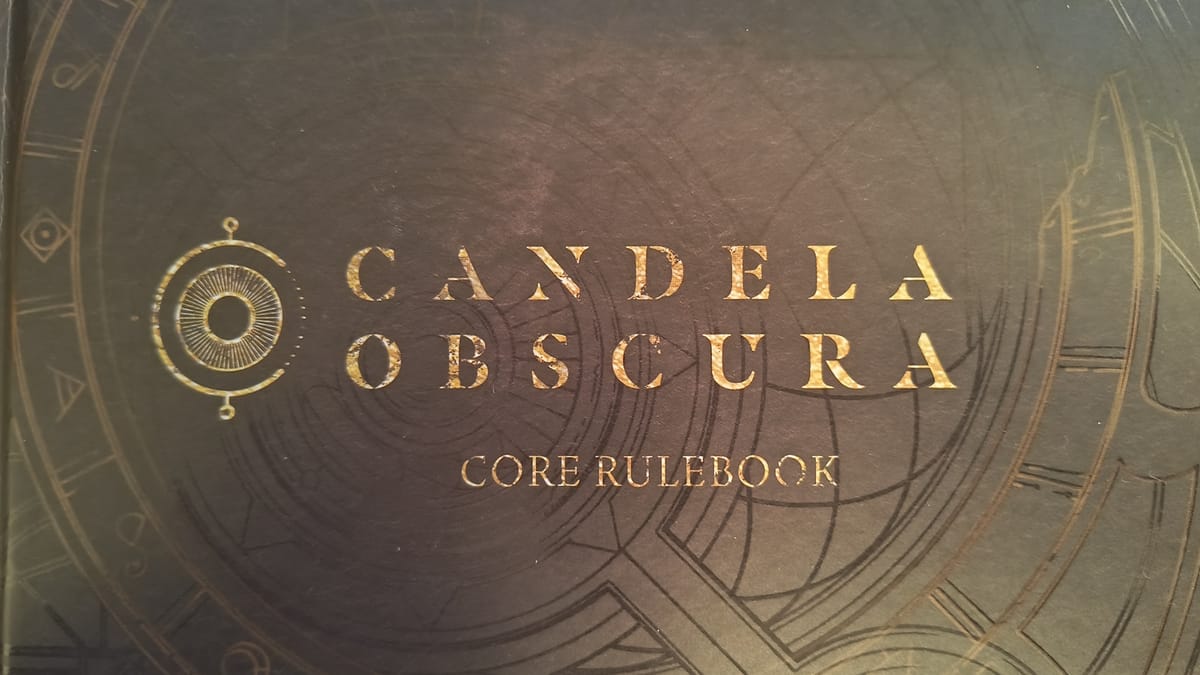
Candela Obscura is an RPG from Darrington Press, Critical Roll’s print division. The game’s focus is on the titular Candela Obscura, an organization that is basically Illuminati GhostBusters. Their job is to track down magickal (always with the k) phenomena and neutralize them. I need to make a pretty important caveat with this review here: I am not reviewing the Critical Roll show of the same name, nor have I had an opportunity to play the game with a live group myself. I am reviewing Candela Obscura purely based on the book itself.
Candela Obscura has one of the best first impressions of any RPG book I’ve seen. My copy is of the standard edition, which has a plain black cover with a shimmering outline of an arcane circle. The book also comes with a ribbon, a nice luxury usually reserved for special editions. Flipping through the tome’s 204 pages, you’ll see impressive and ethereal artwork, usually in a sketch work or watercolor style, as well as notes and scribbles from characters in the world. Some of my favorite pieces are of the roles in the game, using tarot style cards that look very cool. None of this gets in the way of the readability of the game.
Candela Obscura uses a stripped down version of Blades in the Dark, using the dice engine with a few modifications, and stripping out most of the meta-systems from that game. This makes sense; most of the Blades in the Dark systems are tied to being a criminal mastermind in a city filled with the literal ghosts of the past. However, they don’t replace those ripped out systems with anything at all. It feels somewhat disingenuous to call their system Illuminated Worlds instead of Forged in the Dark with how few changes they made.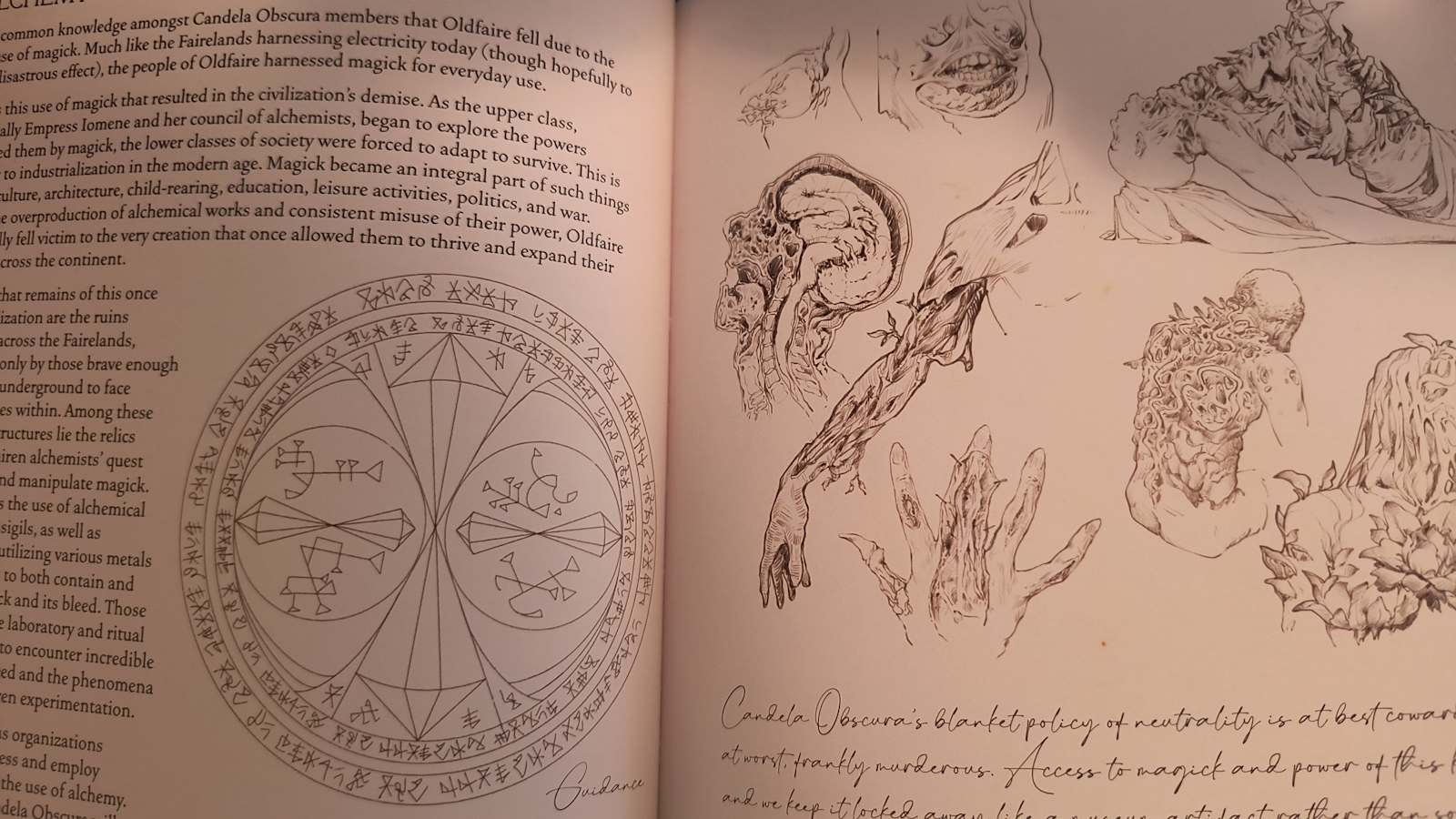
So, what does a session look like? Well, the gamemaster is going to give the players a hook, a cold open like in many mystery shows, and then we snap to the roleplay, often starting in the player’s base of operations as an NPC called a Lightkeeper who delivers their assignment. Thus does play begin.
Candela Obscura, much like the listed inspirations of Monster of the Week and Blades in the Dark, plays with a focus on a conversation between players and GM, instead of rote actions and turn orders. Of course, if a player wishes to do something with possible consequences, they are required to roll an action. There are 9 actions, which are split among 3 different drives. The GM chooses which action best represents the action, tells the player the stakes of the roll, and then, if the player wishes to continue, they roll as many dice as they have in that action. The stakes are a guideline for how bad the repercussions for failing are. This, essentially, removes difficulty modifiers in favor of increasing consequences.
If a player does not feel like they have enough dice, they can either spend drive points from the parent drive, or ask for assistance, which requires drive points from an ally. Each drive spent this way will add a die to the roll. Characters will also have at least one action marked as Gilded. This means that one of the dice will be a different color, and if the player chooses that die, they regain a Drive point in the matching category. This feels weird to me, because the idea is that you choose a definitely worse result now for a possible better result later. It doesn’t seem like much of a choice. Success, either mixed or full, gets the player what they wanted, while consequences set the player back. This could be taking an item away from them, causing some narrative problem for them, or dealing Marks to the character.
Marks are how you track damage, and come in 3 flavors: Physical, Brain, and Bleed. Physical marks are physical damage, such as bruised ribs or scratches. Brain marks are best described as stress, or maybe being confronted with the impossible. Bleed is outright corruptive magickal damage, like having your soul nibbled on. If you accrue 3 marks in any category, you get a Scar.
Scars are a way of tracking the inevitable and serious damage that accrues over the course of a horror story. Physical scars might be broken legs, while Bleed scars might be losing your shadow, or having hourglass pupils. Mental scars might result in phobias or insomnia. In addition, a scar moves a point from one action to another, representing a major change in the character’s behavior due to this damage.
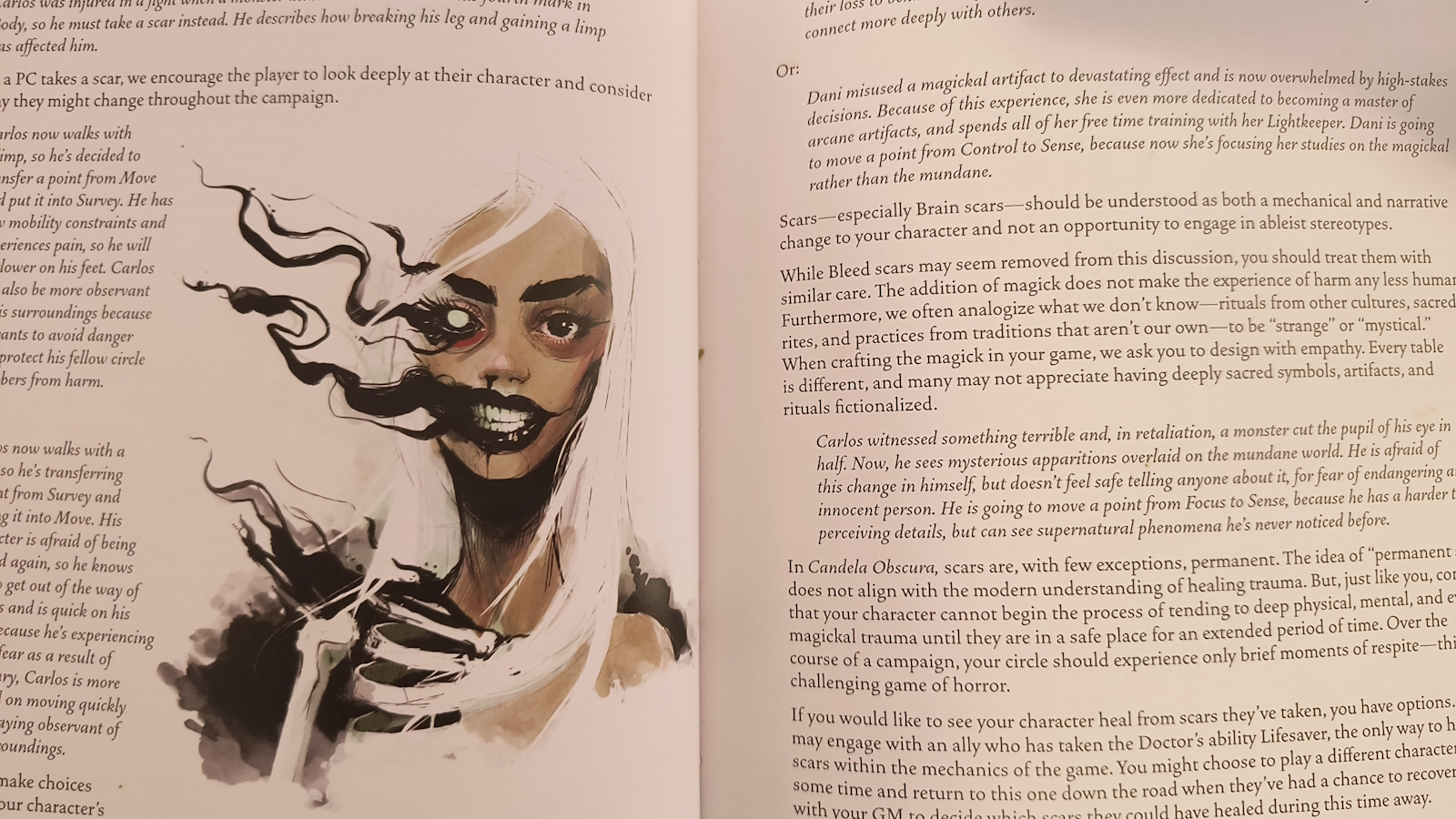
This is one of the points in the book where the writers seem to completely lose any trust they had in their players. There is a two page spread in the book that goes into detail about how important it is to not engage in ableist stereotypes such as brain damage or insanity. This is a sentiment I agree with, from Igor to Renfield to the Joker, fiction has used mental health as an excuse for villainy for a long time. I think mentioning it while extending trust to players to make good choices. Telling players “Scars should … not be understood as an opportunity to engage in ableist stereotypes” also tells players that they don’t trust them to not be a jerk. At the same time, they are vague enough about what they’re talking about, not even using specific examples of harmful portrayals in media, that it seems almost purposefully designed to make people feel nervous about portraying any kind of Scars at all.
What is worse, is the game is missing the bits about death. That is, at what point do characters die? Is there a bleeding out, a heroic sacrifice? There are no mechanics listed here, nor in the GM section, that mention character death. It’s pretty clear in context, of course, since there’s only 3 scar slots, and the game mentions death and dying several times before this point. You get 3 scars, you die. Darrington Press has put out an Errata that explicitly adds these mechanics. Before that, the only real place to spot this is in the lore section of all places.
So now that we’ve covered the basics, the book moves on into character creation. The organization of this chapter is very weird. Each role and specialization in Candela Obscura uses a separate character sheet, which you have to print from their website. However, instead of organizing their book in the same way as the character sheets, the options for each character sheet are spread across several dozen different pages. This makes character creation and reference a nightmare. I had to review this game with the PDF character sheets open so I could effectively compare anything. If you’re not using the character sheets provided (using the old school method of pen and notebook paper, for example), you’re basically going to have to flip back and forth across about twenty pages to nail your character down.
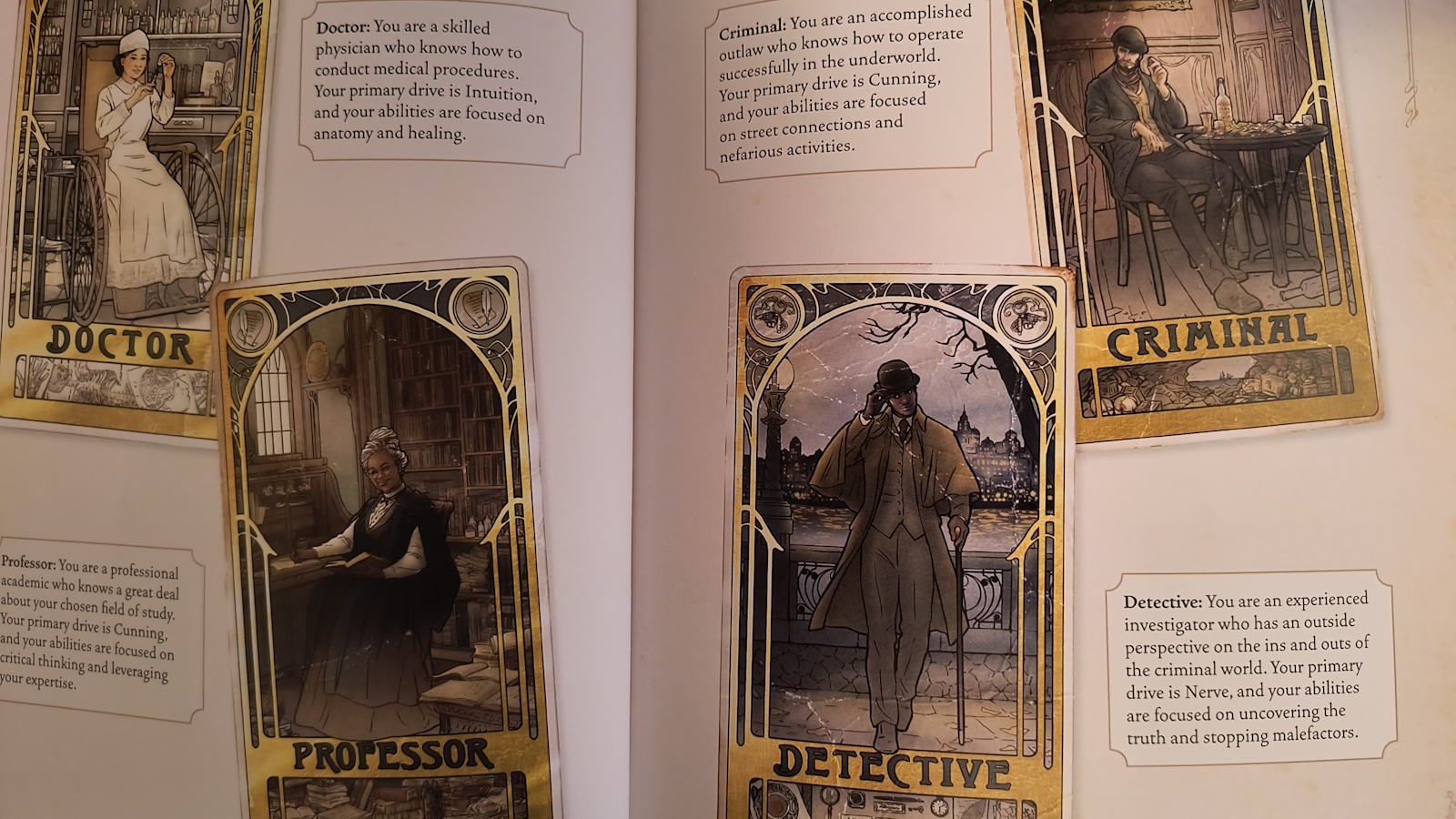
This is one of those things that makes me feel like the writing is lacking the polish the art and exterior clearly received. In every one of the games that inspired Candela Obscura, the playbooks are laid out simply, with one page per playbook. Candela Obscura is the only odd one out, and it feels cumbersome to use without the attendant character sheets.
But, weird organization aside, character creation is simple. The biggest choice a player makes will be to choose their role and specialization. That choice defines their default actions, as well as a handful of special abilities. These special abilities are more often than not narrative tools, like being able to ask questions of the GM and get true answers, or knowing a person in a bar. These seem like they can impact a story, but are actually story shortcuts in disguise.
Allow me to craft an example: The Explorer has an ability that allows them to understand any ancient or esoteric language at the cost of a Drive. This makes that character feel important in the moment, but it also cuts out a chunk of the story where the characters might have to hunt down an expert to find out about this ancient language. What’s more, what if the GM expects that Explorer to use the ability to gain the expected clue, but they choose not to use the ability (since it has a cost)? Now the players have to go through a side story the GM didn’t even consider, leading to making stuff up on the fly or giving information out for free, making the ability moot anyways.
A good GM will understand what their player’s capabilities are, so it’s a weird thing that this is how most abilities work. The other flavors of ability are instant successes with major consequences, gilding a die that normally wouldn’t be gilded, or adding a die in specific circumstances. These abilities don’t feel really impactful, and I think I might forget about them on the regular.
The book dedicates a full 90 pages of lore explaining the world of Candela Obscura. The names of nearly everything in the world have a sense of whimsy. As an example, the main city of the setting is Newfaire, in the Fairelands. Its citizens go to work in the Steam or the Steel. The scholars went to school in Briar Green, but be careful of Revenant Park. Everything cop related is in Nine-Irons, and the wealthy live in Silverslip. These names are, admittedly, descriptive and evocative, but feel like they came from a Lewis Carroll story, not a real world.
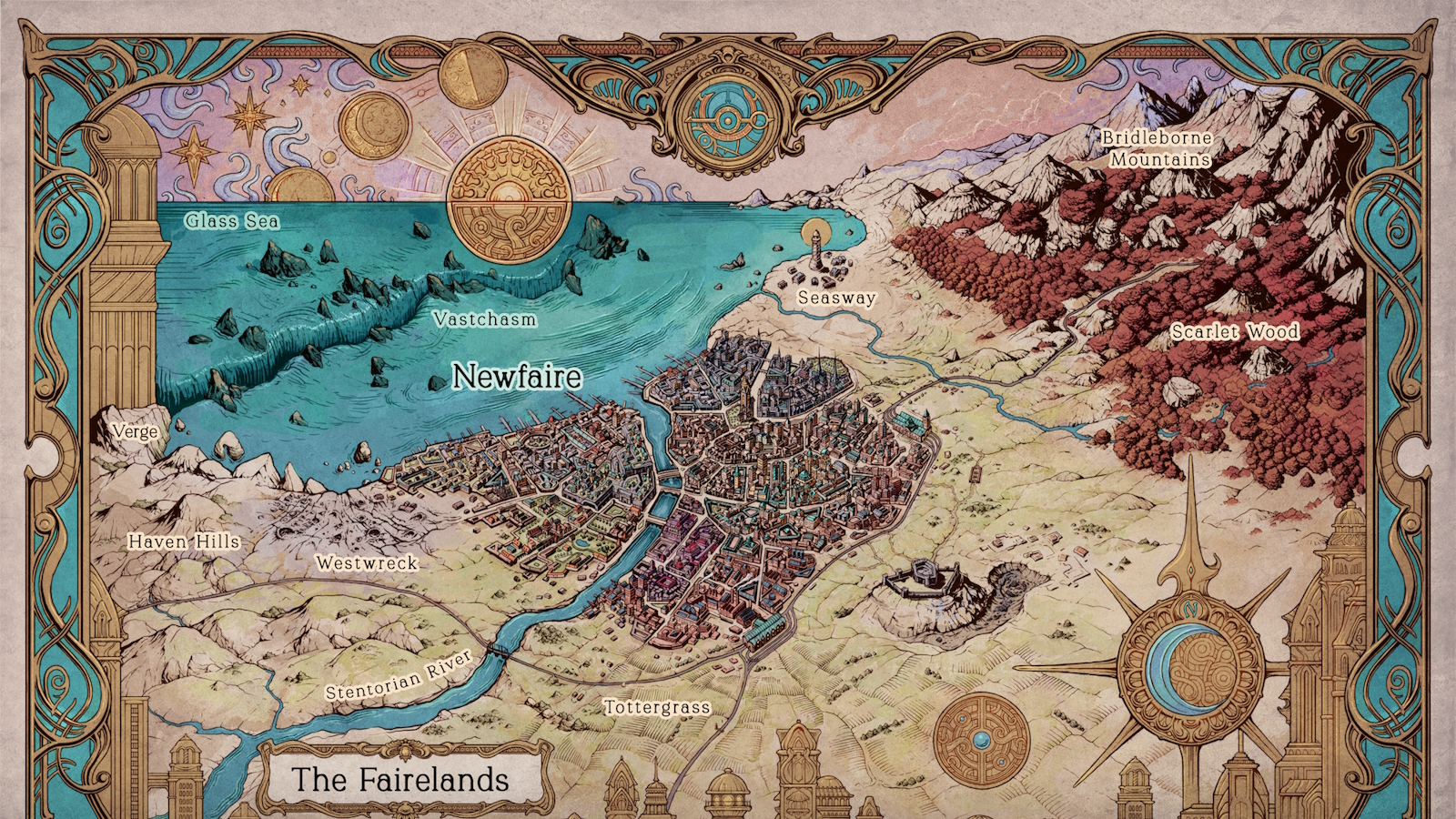
This chunk also talks about the history of Newfaire, in which we learn that Newfaire has no institutionalized racism, sexism, homophobia or transphobia. That is good, I think. However, we who live in the real world know this is a part of the human condition. There are always people who use power to make lives worse so that their lives feel better in comparison. The setting has all of those levers of power, including a church that values “purity” of all things, so how does this culture avoid such pitfalls that are endemic to our world? We don’t really get an answer. In fact, we get more evidence to the contrary. One of the key historical moments is when Otherland invaded, a name seemingly designed for xenophobia. The flaws of humanity are core to the horror genre, and I feel this decision utterly hamstrings the setting.
After the war, technology advanced at a breakneck pace, and spirits are high, even while people still mourn their lost. The narrative is almost certainly building up to another great war, as the impetus for the last one didn’t get solved, merely pushed back a decade or so.
The book also has a list of organizations, who may interfere in or even cause the investigations the game centers around. Each organization has 3 listed folks, but weirdly, every single organization has an example of a nonbinary person. Male representation is actually statistically very low, with no explanation in the setting.
The last section is the GM section. The book encourages players to go ahead and read the section as well, which I disagree with, if only because this section also includes some sample investigations to run. It hardly behooves having players know the plot before jumping in, but that’s a minor gripe. This section also seems to be lacking any kind of suggestions for how many marks to dish out and when. Without experience or some sort of benchmark, a starting GM will either scar characters a lot, or not enough.
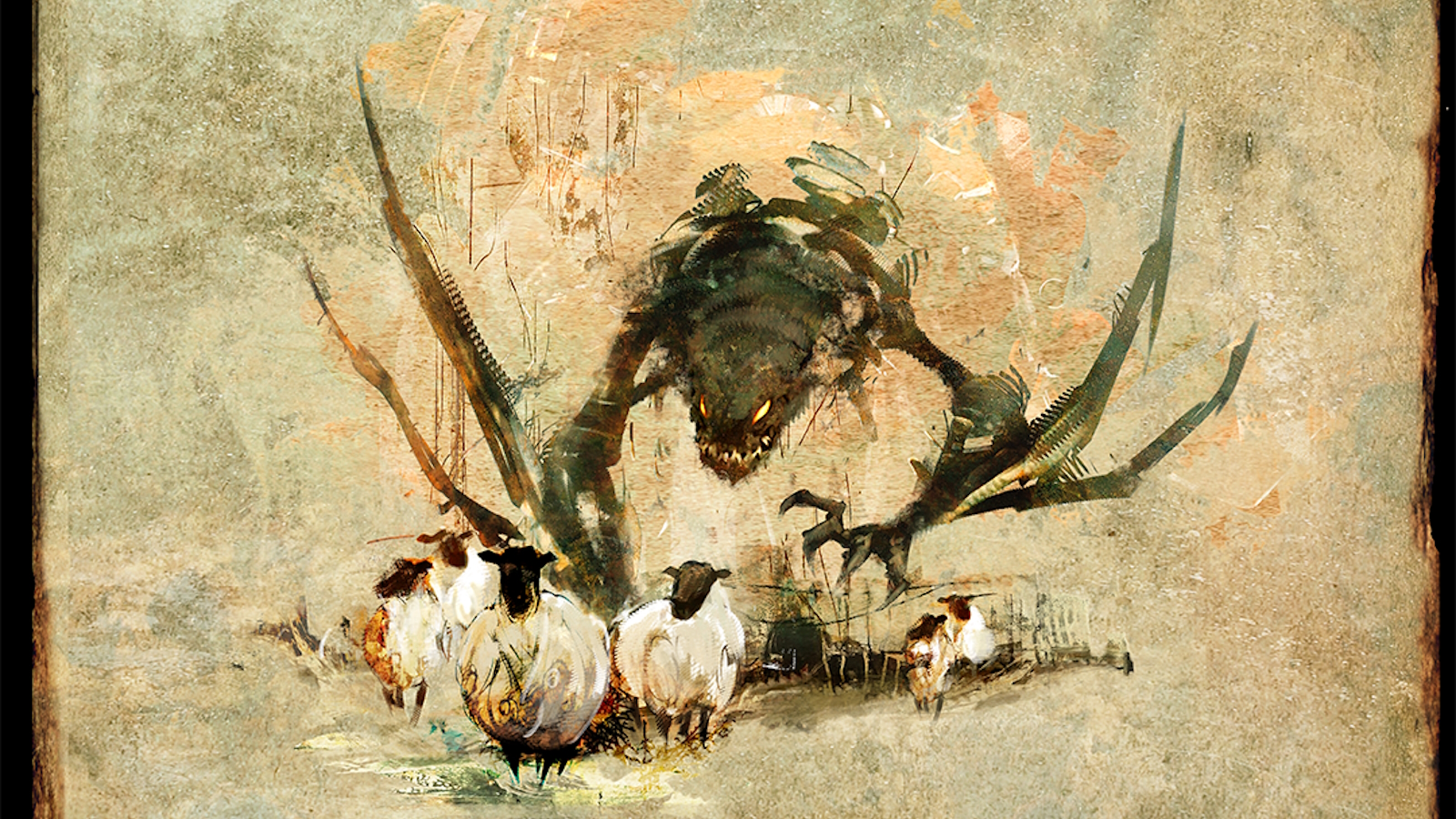
I think my biggest problem with the book is the primary antagonist: Magick. It just isn’t interesting. Apparently, Magick is a force that leaks through to our world across a barrier called the Flare. This barrier is weaker in some areas than others, causing hauntings, portals to nightmare dimensions, etc. But Magick doesn’t feel like a threat in the context of the world. The book makes it feel like Candela Obscura’s job is less a Ghostbuster, and more like a Janitor, cleaning up the weird stuff that leaks out and patching up the damage.
Magick doesn’t appear to have a motive will of its own at all, aside from whatever creatures it conjures up. And those seem to be like rabid animals or ghosts, not dark gods or evil wizards. And this is kinda the problem. The entire game revolves around stopping Bleed and Magick, but we have fewer than 20 pages total about the supernatural. I feel like we could have had 20 pages less lore about the Fairelands, and let GMs build their own vision of the city, and instead make the horrors of bleed known far more viscerally. And give us some dark gods or Flare entities or something. Candela Obscura spends so long on the world, that they forgot to give us much of anything about what we’re supposed to be focusing on.
I really wanted this to be good. I really did. With Hasbro and WOTC losing their damn minds (and jobs, unfortunately), Candela Obscura was meant to be the first of a new cohort of RPGs that players could go to instead of DnD. Instead, it’s a shabby copy of the last batch of good stuff that misses every point it tried to make.
Candela Obscura
Mediocre
Candela Obscura hides many horrors within its pages, but mediocre game design, distracting setting choices, and poor messaging decisions makes what should have been an amazing product into one that simply falls flat. Its attempts at in depth world building fail because it doesn't focus on the same things the game design focuses on.
Pros
- Simple system
- Quick and easy character creation
- Incredible art and product quality
Cons
- Poor organization
- Focuses more on setting than Magick, the actual objective of the game
- Missing mechanics
- Boring character abilities
